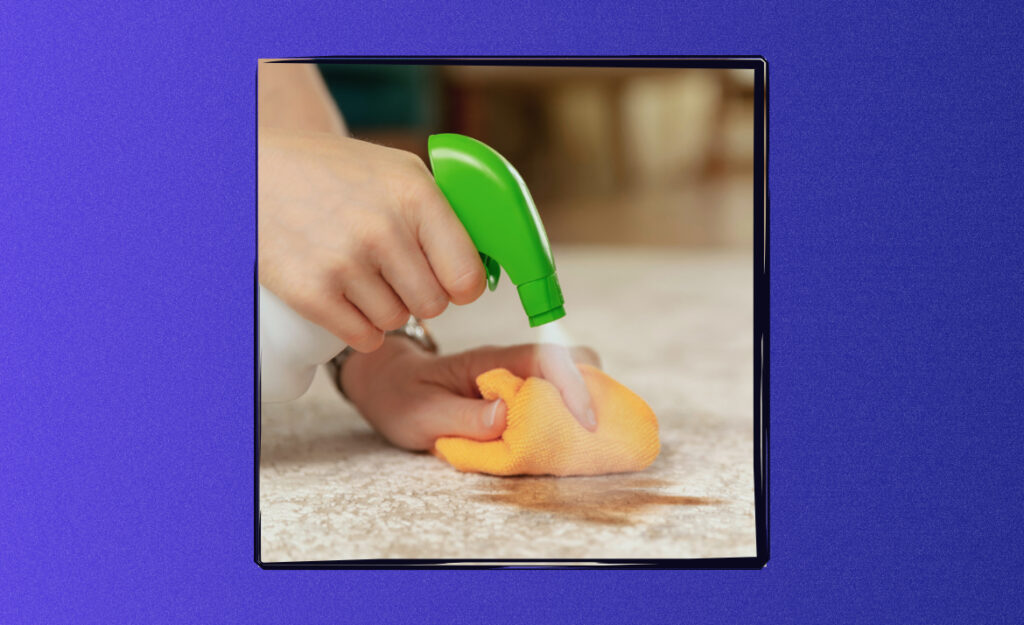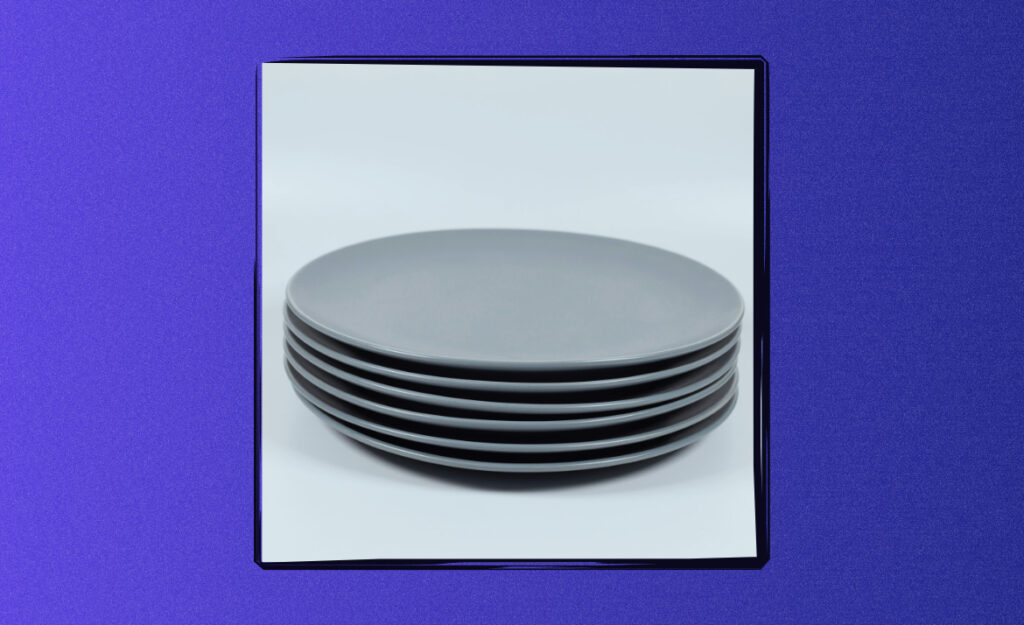
Closet organization makes mornings far less chaotic. Without it, even a spacious wardrobe quickly feels cramped, as if every new piece shrinks the available room and hides your favorite clothes.
Closet space matters, yet many people fill it without structure. That creates daily frustration, forgotten outfits, or duplicate purchases. Orderly systems turn the mess into a calmer daily routine.
Keep reading for tips designed to restore balance to your wardrobe. These practical steps help you reclaim space, refresh old systems, and highlight the pieces you actually enjoy wearing.

Fresh Fridge Odor Fix That Lasts: Practical Solutions
Learn effective fresh fridge odor fixes with easy cleaning routines, natural absorbers, and smart storage habits.Sort with Intention: Laying the Groundwork for Lasting Results
Sorting sets a strong foundation for any closet update. You’ll gain clarity on what you have and what needs to go or stay. This action helps every other system fit seamlessly into your space.
Start by clearing every item from your closet. Laying clothes on your bed, you’ll instantly see what’s excessive. Pick up each piece wondering, “When did I last wear this?” That simple prompt streamlines decisions.
Rule: No Hesitation—Decide Instantly
Hold up an item and say, “I’d wear this tomorrow,” or “I forgot I even owned this.” Don’t linger over memories or hopes—it’s a living closet, not a museum.
Allow yourself a strict yes or no. If a friend watched you, could you confidently explain why you’re keeping it? This rule builds new habits for any future purchases too.
Place definite keeps in one pile, donations in another, and anything unwearable into a trash or recycling bag. Stick to this rule and your closet refresh will move much faster.
Scenario: Clothing Swap with Friends
You invite friends to bring their unused clothes. As laughter fills the room, everyone tries on pieces, trading items they don’t love for new favorites. “I never wore this,” someone says, handing over a dress that fits you perfectly.
These swaps give sentimental pieces a new home, while also helping you edit your collection ruthlessly. At the end, you’re left with items that excite you, not clutter.
Once finished, you’ll notice airier shelves and visible floors. Donate unneeded pieces promptly, so nothing creeps back into the closet once you’re done.
| Item Type | Keep Criteria | Donate If | Actionable Takeaway |
|---|---|---|---|
| T-Shirts | Fits well, worn in the last 6 months | Unworn or ill-fitting | Move top three into easy reach, set donation bag for the rest |
| Jeans | No rips, match current style | Outdated, uncomfortable | Try every pair; donate any that hesitate to wear |
| Jackets | Used for layering or work/events | Never leave the closet | Rotate seasonally, store unused off-site |
| Dresses | Fits current lifestyle | No longer match needs | Reserve hangers for most versatile pieces |
| Shoes | All-day comfort, match at least three outfits | Painful, duplicate use | Line up see-wear pairs, store out-of-season pairs elsewhere |
Create Easy Systems: Make Everything Instantly Accessible
Good closet organization tips turn every hanger and shelf into prime territory. A system is any routine you can maintain daily, not just after big clean-ups.
Choose logical zones for clothing. Place everyday items at eye level and move seasonal or seldom-used garments up high or down low. That way, you won’t disrupt careful order in a rush.
Checklist for Quick-Access Zones
A functional closet makes it simple to reach for essentials without digging. Build a checklist for main zones: eye-level for workwear, low shelves for shoes, upper storage for excess bedding and big bags.
- Zone top shelves for less-used pieces—holiday sweaters, backup bedding. Use labeled bins so retrieval is quick.
- Arrange everyday shirts and pants front and center. Choose a uniform hanger style for cohesion and prevent tangling.
- Use lower shelves for shoes, rolling baskets for athletic gear, and cubbies for folded denim. Keep what you wear most nearest the closet entrance.
- Hang belts and scarves on hooks inside the door for split-second access. This spot keeps small items visible and prevents tangling with clothes.
- Store out-of-season items in under-bed bins, labeled with contents for easy swaps each season.
Following such a list roots habits in place. At-a-glance order beats a cluttered hunt every time.
Step Sequence: Sorting an Overflowing Shelf
If your shelf holds a leaning tower of sweaters, set a timer for 15 minutes and stack by color. Return only what fits that season, moving excess to a storage box labeled “Fall/Winter.” Now, every stack stays tidy through the week.
- Remove all items. Wipe shelf.
- Group by use: current season, next season, and “rarely wear.”
- Replace only current items—rest go in labeled bins for off-site or under-bed storage.
- Stand items vertically, so you see patterns at a glance (file-fold).
- Add a shelf divider to keep future piles from toppling.
Use the step sequence every quarter to sustain an always-ready closet.
Optimize Hanger Real Estate: Small Changes, Big Gains
Hangers shape your closet’s capacity and order, yet most of us let mismatched ones jam up valuable space. Replace awkward plastic or dry-cleaner hangers with slimline velvet versions for instant benefit.
Upgrade doesn’t mean buying hundreds upfront; start with one grouping—blouses, for example—then phase in matching hangers as you pare down items, using closet organization tips to identify priorities.
Hanger Swap Mini-Process
Set aside one evening to focus on a tricky category. Take every item—say, your work shirts—and switch each to a matching slim hanger. Immediately, space appears where none existed. For a fun touch, color-code hangers for different clothing types.
Each time you grab a hanger and it glides smoothly, you know you’re saving seconds. That small ease snowballs into daily calm.
Leave old, bulky or cracked hangers by the door for recycling after your swap. Every hanger should have a clear function or it exits the closet.
Divide By Type: The Zone-and-Hook Method
Once your hangers match, split your closet by clothing type. Position shirts left, jackets in the center, and pants on the right (or whatever order matches your routine). Add herb sachets or cedar hangers to refresh your space and deter moths.
Grouping helps you scan and grab instead of shuffling through squeezed rails. This approach is like a grocery checkout: sorted lanes speed up decisions. Each time you hang up a piece, follow established order.
Hooks on the wall or inside the door catch handbags, hats, and tomorrow’s outfit. Practice the “one in, one out” mantra as you build habits for new purchases.
Transform Wasted Corners: Reclaim Awkward Spaces for Storage
Most closets hide nooks or odd corners, making items vanish until discovered months later. Tapping these spaces, with a few focused closet organization tips, reclaims real estate you never realized.
Fitting slim, adjustable shelving or stackable bins lets you add visible storage vertically. Suddenly, boots, bags or excess linens each have a zone—no more tangled piles or forgotten finds.
Install a Tension Rod: Vertical Double-Hanging
Above low clothing racks, fix a tension rod for blouses or short jackets. Doubling your hanging space is like parking in both the driveway and garage—you expand usable area without any remodeling, all with a $10 tool in under five minutes.
Measure height so shirts on each rod clear the items below, and stagger by category: tees above, pants below. Tension rods are flexible, letting you adjust as your closet evolves.
For renters, removable adhesive hooks secure rods without damaging walls. Add a rod only where it doesn’t interrupt a smooth flow.
Drawer Units for Accessories: Dedicated Stations
Plastic or mesh drawer units slip easily under hanging racks. Group items by use: sunglasses on top, jewelry in the middle, small bags beneath.
This method mimics a department store display. When it’s easy to see and reach belts or ties, you’ll use more of what you own. Each Sunday, return strays to their spots for sustainable tidiness.
Small, stackable cubes also work for rolled t-shirts or exercise wear, keeping bulky drawers from jamming and expanding choices during quick changes.
Choose The Right Storage Solutions: Tools for Every Budget
Finding the best gear matters less than how you use it. Assign every item a home—no orphans or overflow. Even a shoe box transforms a shelf when labeled and filled with intent.
Review these quick comparisons for efficiency, budget, and best use. Choosing smart tools ensures your closet makes sense for you, day after day.
| Solution | Best For | Budget Range | Why It Works |
|---|---|---|---|
| Over-the-door rack | Shoes, hats, bags | $10–$30 | Uses dead space and keeps accessories visible |
| Slimline hangers | Shirts, blouses | $15–$50 (set) | Saves space and keeps items from sliding off |
| Shelf dividers | Sweaters, bags | $10–$20 (set) | Prevents stacks from toppling over and categorizes at a glance |
| Clear bins | Accessories, shoes, off-season | $20–$40 (set) | Makes contents visible and swaps easy |
| Label maker | All categories | $10–$30 | Reduces guesswork and speeds up morning prep |
Container Labeling Strategies
Labels clarify where things go—no mental math required. Use consistent wording and color. Instead of “Misc,” opt for “Winter Scarves” or “Workout Tops.” This prevents mixed bins and frantic searches.
Handwritten sticky labels work until you’re ready for a label maker. Family members learn the system fast when every bin, drawer or rod is easily understood.
Whenever you reorganize, check your labels. Revise them as your needs or wardrobe change, keeping language sharp and specific for every user.
Repurposing Everyday Items
Shoe boxes, muffin tins and ice cube trays make simple organizers for accessories. Slide trays into drawers for earrings; boxes work for rolled socks or belts.
This budget-friendly approach builds on what you already have, while customizing storage on the fly. Next time you finish a tin or container, measure the space first—then decide if it fits your daily routine.
Encourage kids to decorate their own bins or boxes. When everyone feels invested, the organization sticks longer.
Make Maintenance Habitual: Keep Clutter in Check
Systems fall apart when they get forgotten. Turn these closet organization tips into weekly habits with a few tiny rituals, anchoring order without major overhaul.
Pair five-minute closet sweeps with regular routines—Sunday laundry, or after selecting outfits for the week. A consistent rhythm helps every family member maintain shared systems with almost no conscious effort.
Mini Reset, Big Return
After unloading or folding laundry, immediately return fresh clothes to their designated spots instead of piling them on a chair. This speeds up daily outfit choices and reduces next-day panic.
Each month, set a micro-goal: one week, you toss wire hangers; another, you match socks. Bit by bit, clutter can’t gain a foothold. Even children can handle ten-minute resets for their own shelves.
Place a small bin marked “Donate” near the closet entrance, so each time an item feels wrong, it goes straight into the queue. Clear the bin monthly.
Seasonal Review Process
With each weather change, shift off-season items into storage containers. Prompt family or roommates with the phrase, “Let’s swap for summer,” inviting participation instead of top-down orders.
Inspect hanging and folded items for damage as you transition. If something’s lost shape, stained beyond fixing, or no longer fits the season, thank it and move it out.
Snap a photo of a favorite outfit after each swap—a quick reminder of what looks and feels best for future reorganizations.
Wrap-Up Strategies for Lasting Closet Harmony
Every meaningful closet overhaul comes down to intentional choices, accessible organization, and self-aware updates. It’s less about buying shiny bins and more about how you use your space every day.
Ruthless sorting, logical zones, structured storage, and easy labeling transform the daily grind into a smooth experience. With tailored closet organization tips, you enjoy both style and peace of mind—without wasted time or forgotten favorites.
Whenever clutter sneaks back in, apply a single tactic from above. The most successful closets are built on steady progress, not perfection. Celebrate each small win, and your closet will keep rewarding you.
Frequently Asked Questions
How do I start organizing a messy closet?
Begin by emptying every item, sorting into keep, donate, and discard piles. Then clean all shelves and rods. Start putting back only what you love and plan to wear right now. This clears both visual and mental clutter for the next steps.
What if my closet is too small for all my clothes?
First, review your wardrobe for duplicates, outgrown pieces, and off-season items. Store rarely used or seasonal clothing in labeled bins under your bed or another room. Prioritize keeping only high-rotation essentials visible and at-hand for daily use.
How do I organize shoes in a crowded closet?
Use an over-the-door shoe rack or stackable bins on the closet floor to maximize vertical space. Arrange shoes by type or frequency of use, so your favorites are easy to grab. Rotate with seasons, so your closet isn’t clogged with rarely worn pairs.
How often should I reorganize my closet?
A seasonal reset—about four times a year—prevents clutter from creeping back. Quick mini-checks each week or month keep things tidy, especially if you have kids or share space. Tightly scheduled reviews ensure your systems keep pace with changing wardrobes or routines.
What’s the fastest way to maintain closet organization?
Link closet habits to other routines, such as laundry day or Sunday night reset. Return items to their designated spots immediately. Keep a labeled donation bin handy for instant purging. Tiny, regular actions outlast a single massive clean-up every time.



